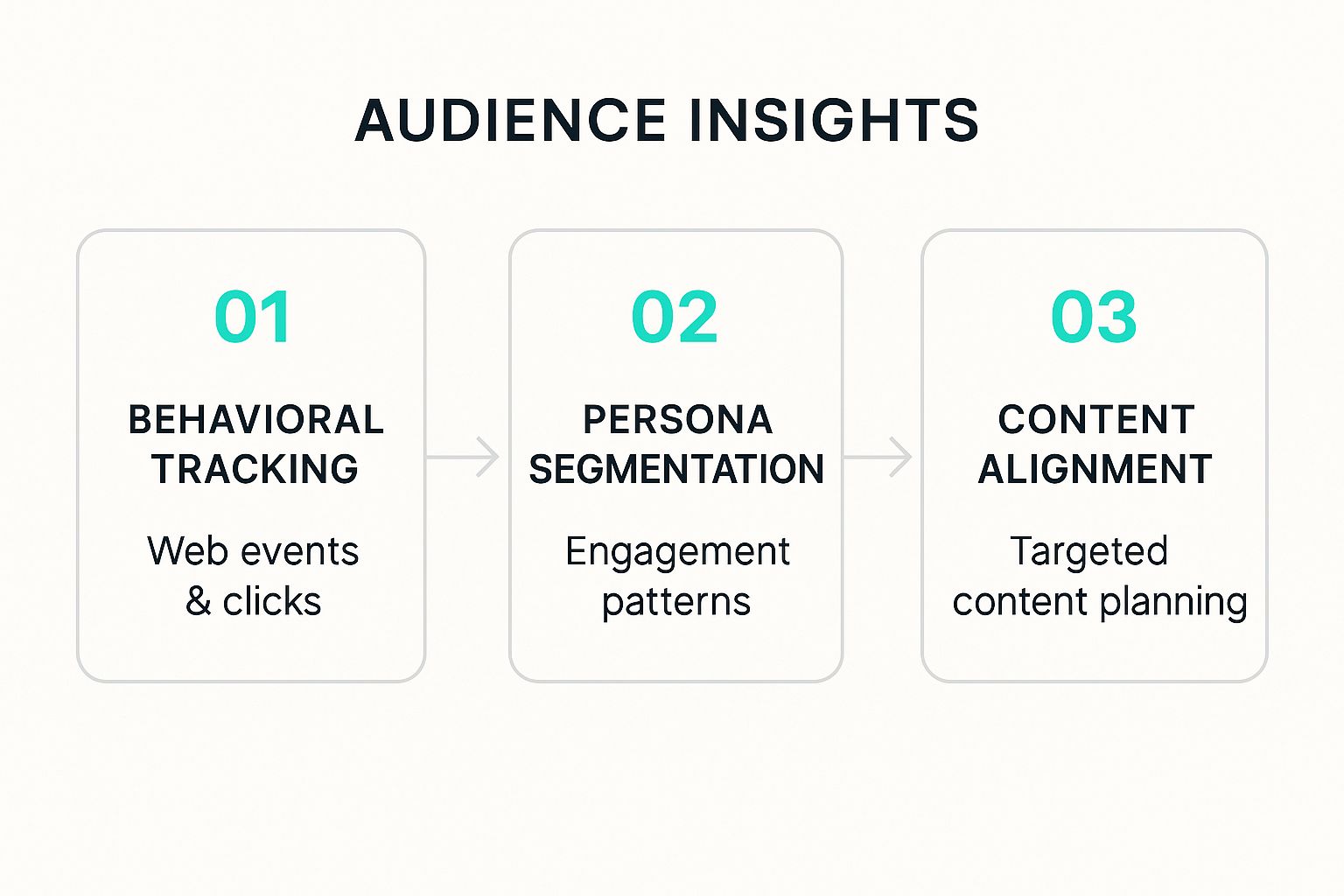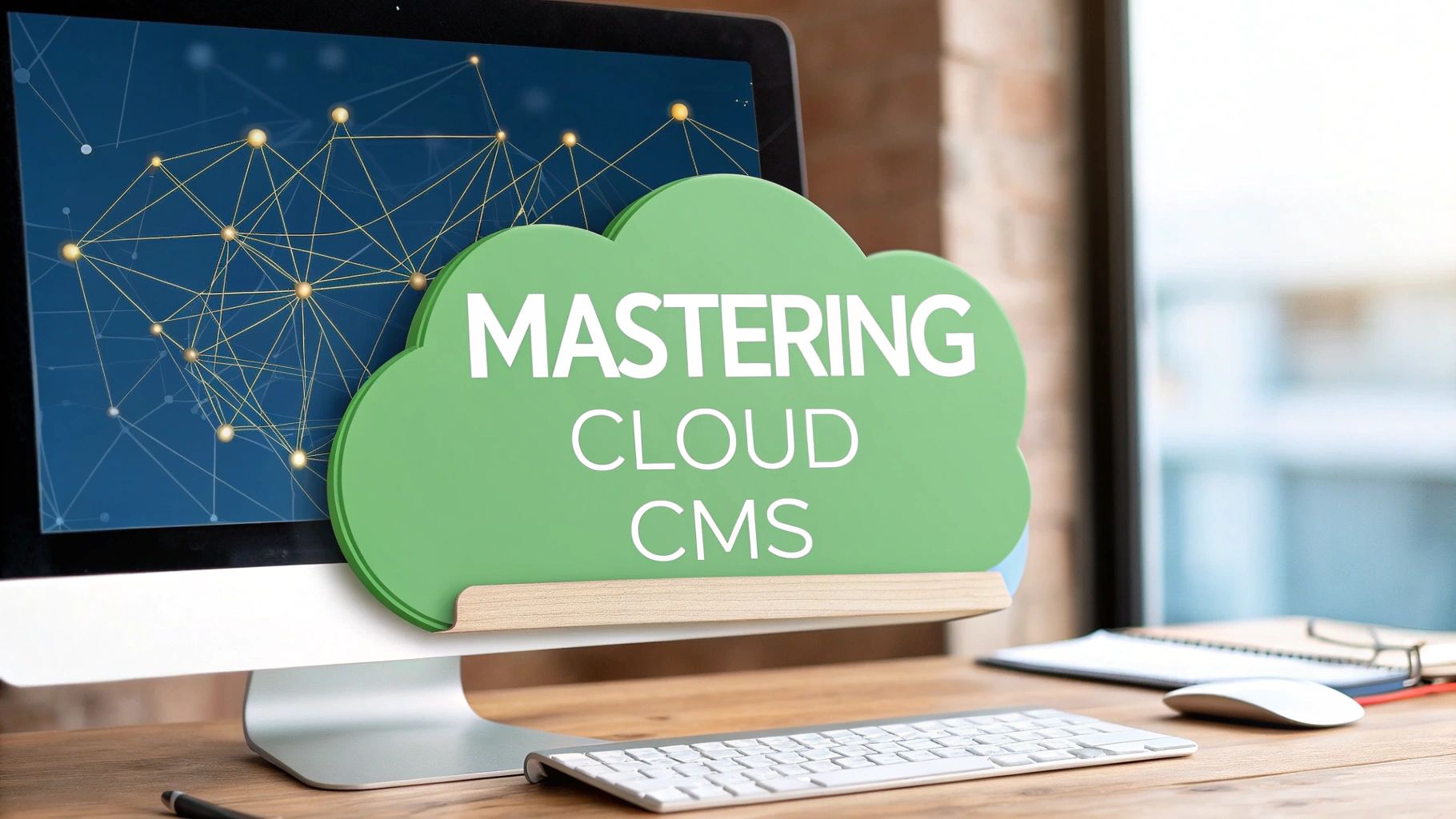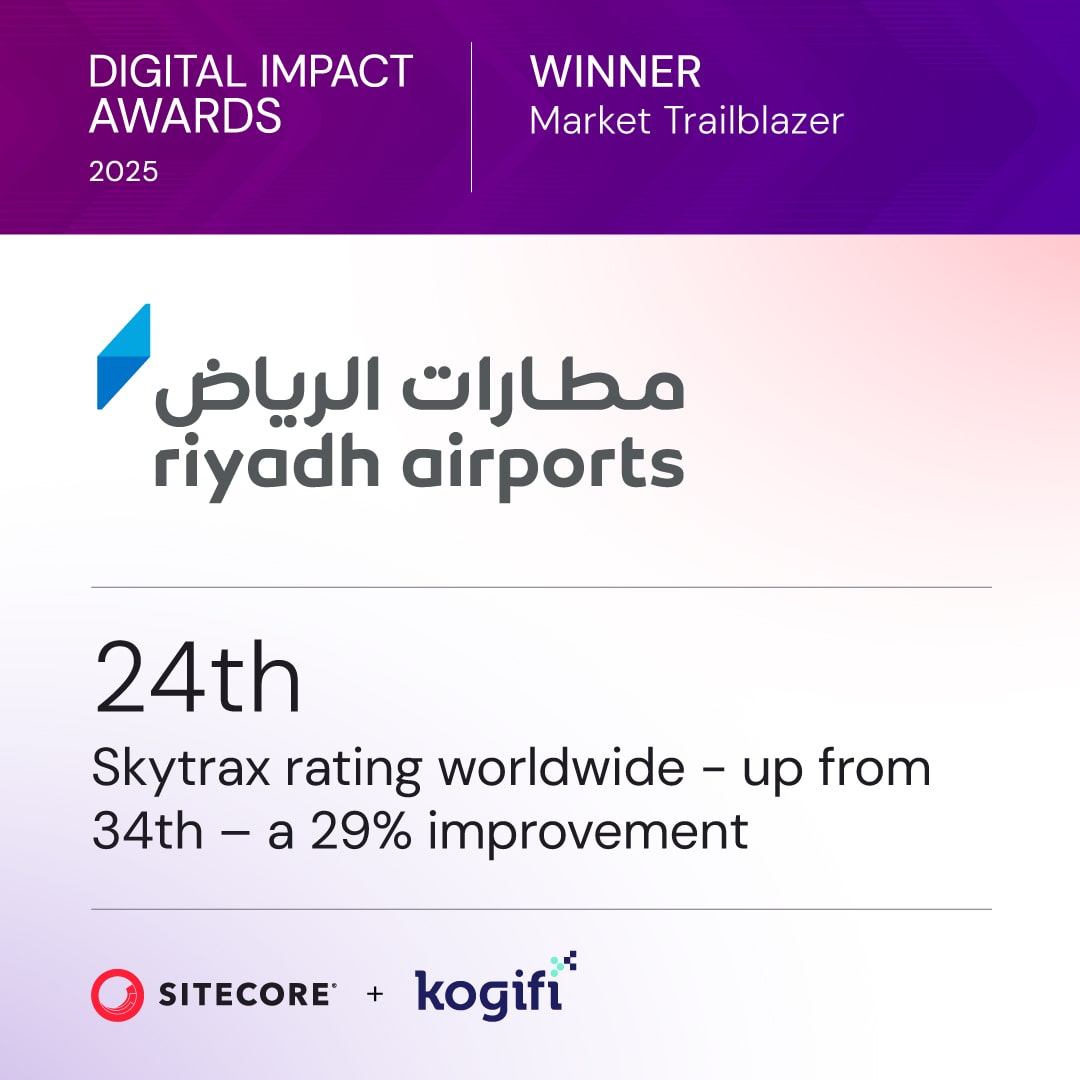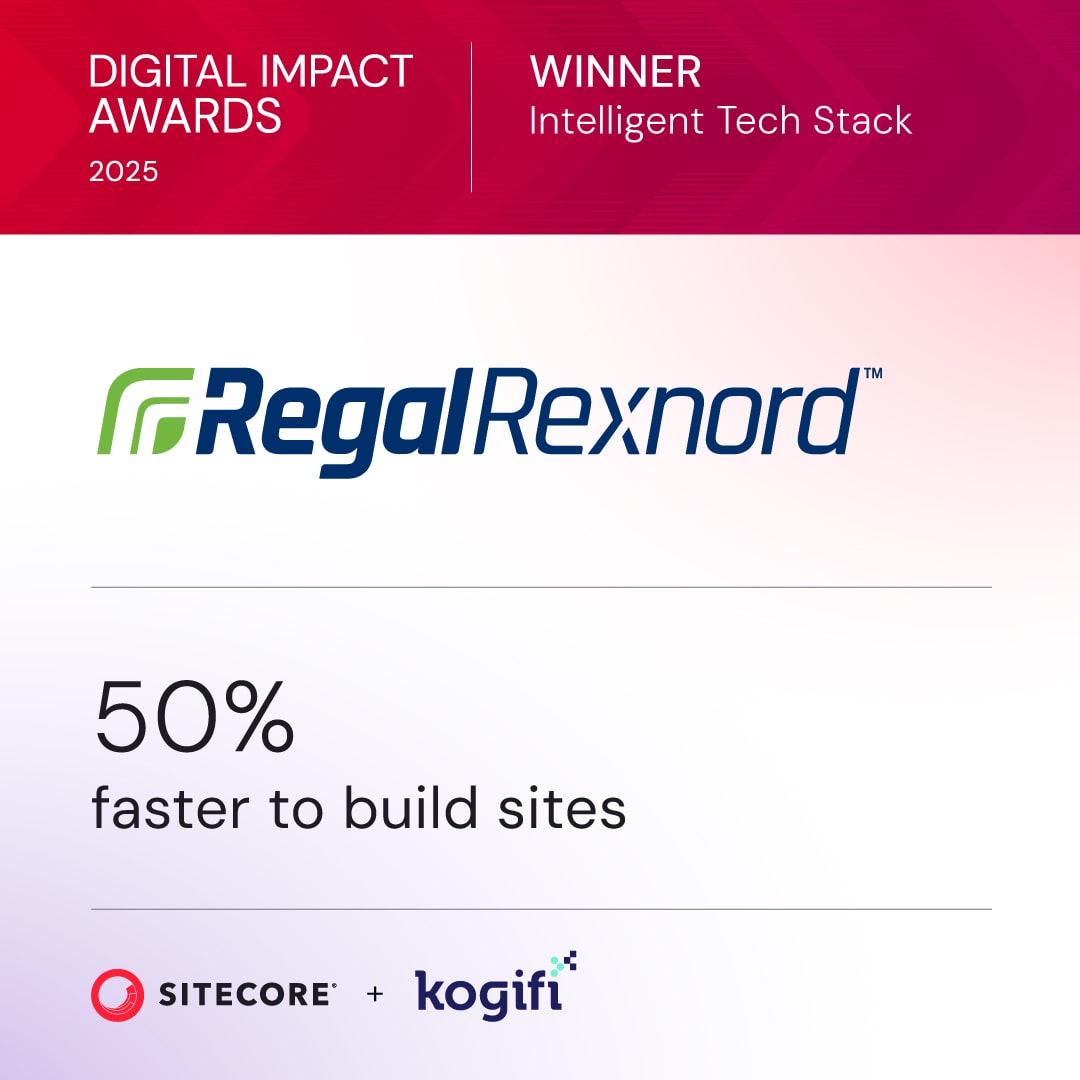Crafting a content strategy that actually works starts with a simple, yet often overlooked, first step: defining its purpose. It’s about making sure every article, video, or social post you create serves a clear, measurable purpose that ladders up to a bigger business goal, whether that’s generating qualified leads or increasing customer lifetime value.
Defining Your Content Strategy's Purpose

Before you write a single word, you have to anchor your strategy to a real business problem. Goals like "getting more traffic" aren't goals at all—they're outcomes. A genuine content strategy starts by asking, "What business problem are we actually trying to solve?"
The answer to that question changes everything.
For instance, if your main objective is to drive lead generation, your focus in Sitecore XP naturally shifts. You'll concentrate on building highly personalized landing pages, creating content that captures user data, and setting up personalization rules to nurture those leads.
But if the goal is to boost customer loyalty, you’d take a completely different path. Your strategy might revolve around developing a comprehensive support portal on that same platform, filled with content designed to answer questions and slash the number of service tickets.
Connecting Business Goals to Platform Tactics
This principle applies just as much to internal communications. If the goal is to improve knowledge sharing, a SharePoint intranet becomes the heart of your strategy. Your content would be wikis, project documentation, and team updates—all aimed at making the business run more efficiently. Each goal demands a different set of tactics and KPIs.
This first step is so critical because it builds a bridge from high-level business objectives to the specific actions you can take and measure. For those new to the process, Sitecore offers a foundational comprehensive content marketing strategy guide that can offer a solid framework.
To make this connection more concrete, here's a simple way to map your business objectives to the tools at your disposal:
Connecting Business Goals to Sitecore and SharePoint Tactics
This table provides a practical framework for aligning business needs with specific platform capabilities and measurable outcomes.
By structuring your plan this way, every piece of content becomes a strategic asset, directly contributing to the bottom line instead of just being another expense.
A well-defined purpose ensures every piece of content functions as a strategic asset, not just an expense. It provides the "why" behind every blog post, case study, or video you produce.
This clarity is what lets you tap into the full power of a platform like Sitecore. Using Sitecore Analytics, for example, you can track more than just page views—you can measure the engagement value of every interaction. This shows you how well your content is actually moving users toward your goals, whether that's filling out a form or making a purchase. The global content marketing market is expected to hit $2 trillion by 2025, a massive jump from $413.2 billion in 2022. This explosion shows just how crucial it is to tie content directly to business outcomes.
Setting Measurable Objectives
The key is to draw a straight line from your purpose to your metrics. It has to be that direct.
- For Lead Generation: Your main KPI might be the conversion rate on a specific landing page, tracked right inside Sitecore’s goal and event-tracking features.
- For Customer Loyalty: You could measure the drop in support calls or the rise in positive feedback after launching a SharePoint-based customer portal.
- For Brand Awareness: Metrics could include a bigger share of voice on key topics or a steady increase in organic traffic to your pillar pages.
When you start with a clear, measurable purpose, you build a foundation for success that makes every other decision in your content strategy easier and more effective.
Uncovering Audience Insights with Sitecore Analytics
If you really want to know your audience, you have to go deeper than surface-level demographics. It’s about understanding their digital body language—and Sitecore gives you the tools to do just that. A truly successful content strategy is built on knowing who you're talking to and what they actually need.
The process starts by using Sitecore XP’s analytics and personalization engine to build data-rich user personas. This lets you move past guesswork and start tracking on-site behaviors, mapping engagement patterns, and segmenting visitors based on what they do, not just their self-reported job titles.
This is how you turn raw behavioral data into actionable insights for creating content that genuinely connects.
Harnessing Sitecore XP for Deep Behavioral Analysis
Sitecore Experience Platform (XP) is built to capture a granular view of every single user interaction. We're not just talking about page views; we're talking about the entire journey. Every click, every download, and every video play contributes to a user's Experience Profile.
This profile is a cumulative record that grows with each visit, painting an incredibly detailed picture of an individual's interests and intent. You can see exactly how different segments interact with your content, identifying which topics resonate most with C-level executives versus, say, technical managers. This is critical for knowing what to create next.
The core of an effective content strategy isn't just creating content; it's creating the right content for the right person. Sitecore’s analytics engine makes this possible by revealing the unspoken needs of your audience through their digital behavior.
For internal communications, SharePoint offers similar (though simpler) analytics. You can track page views, document downloads, and search queries on an intranet to see what employees are actually looking for. This data helps identify knowledge gaps and ensures your internal content is hitting the mark.
From Data Points to Actionable Personas
Once you start collecting behavioral data, the next move is to segment those visitors into meaningful groups. Sitecore’s personalization engine lets you create pattern cards and assign users to personas based on the content they consume.
For example, a visitor who repeatedly views pages about "customer data platforms" and "integration" can be automatically assigned to a "Technical Decision-Maker" persona. This kind of data-driven segmentation is far more powerful than static, assumption-based personas. It also allows you to integrate data from other systems, which you can read more about in our guide on customer data integration solutions.
This visual breaks down how raw visitor actions get transformed into a strategic content plan.

As the infographic shows, effective content doesn't happen by chance. It's the result of a systematic process that connects audience behavior directly to your content calendar.
This data-first approach ensures your content isn't a shot in the dark; it's a precisely targeted solution to what your audience is looking for. Of course, analytics tools are just one piece of the puzzle. It's also vital to layer in strategic keyword research to uncover specific audience needs, especially when it comes to conducting effective long-tail keyword research, which can reveal highly specific user intent.
Translating Insights into a Content Plan
Armed with these insights, your content plan becomes significantly more strategic. Instead of brainstorming generic topics, you can address the specific interests of your most valuable audience segments.
- For the "Technical Decision-Maker" persona, you might create detailed implementation guides, API documentation, or comparison sheets.
- For a "Business Strategist" persona, your focus would shift to ROI calculators, case studies showcasing business value, and thought leadership articles on industry trends.
By systematically analyzing this information, you move from creating content you think your audience wants to creating content you know they need. This insight-driven approach is what separates good content from great content.
Mapping the Content Journey Across Your Ecosystem

Great content doesn't just sit there—it needs a job to do. Its purpose is to guide people from their very first click all the way to becoming a loyal customer. This means you need to architect a content journey that aligns perfectly with the customer lifecycle: Awareness, Consideration, and Decision.
Let's imagine how this plays out with a combined Sitecore and SharePoint stack. A new visitor lands on a high-level blog post on your Sitecore site, their interest piqued. As they click around, Sitecore Personalize picks up on their engagement and automatically serves them a targeted case study. That case study? It was collaboratively drafted, reviewed, and approved right inside SharePoint.
This isn't just a collection of random posts; it's a blueprint for an interconnected experience. Every single piece of content has a specific role, all working together to move prospects intentionally through your funnel.
Architecting the Awareness Stage
The Awareness stage is your digital handshake, your first impression. Your goal here isn't to sell, but to attract a broad audience and introduce them to a problem they might not even realize they have. Think educational, discoverable, and shareable.
This is the natural home for your top-of-funnel content, usually published on your main Sitecore website.
- Blog Posts and Articles: Tackle broad industry pain points. A post like "5 Signs Your Current CMS is Limiting Growth" isn't a sales pitch; it's an eye-opener that educates the reader on a challenge.
- Infographics and Short Videos: These are gold for social sharing. They're quick, digestible, and perfect for driving traffic back to your Sitecore-powered domain.
- Social Media Content: A staggering number of consumers discover new businesses through social media channels, so you can't afford to ignore them. Your posts should act as breadcrumbs, linking back to deeper content on your main site to kick off their journey. For more on this, you can review some relevant key marketing statistics.
During this phase, SharePoint is the command center behind the curtain. It's where your team drafts blog posts, routes infographics for design approval, and maps out the social media calendar.
Navigating the Consideration Stage
Okay, so a user knows they have a problem. Welcome to the Consideration stage. Now, they're actively digging for solutions, and your content needs to shift gears from broad education to specific, solution-focused guidance that cements your expertise.
This is where Sitecore’s personalization engine really starts to flex its muscles. Based on what a user consumed in the Awareness stage, Sitecore can begin tailoring their experience on the fly.
The handoff from Awareness to Consideration is the moment a generic visitor evolves into a qualified prospect. Your tech stack needs to recognize that shift and adapt, moving from broad strokes to personalized solutions.
For instance, if someone read a few posts about CMS limitations, Sitecore Personalize can serve them a CTA for a webinar on "Choosing the Right DXP." Visualizing these transitions is key, and our customer journey mapping template is a great resource for that.
Here are the content types that win at this stage:
- Case Studies and Whitepapers: Nothing proves your solution's value like real-world results. A compelling case study, collaboratively drafted in SharePoint and stored in its document library, can be gated on your Sitecore site to capture valuable lead info.
- Webinars and E-books: These are your deep dives. They offer significant value in exchange for a user's contact details, signaling a higher level of interest.
- Comparison Guides: Don't be shy. Directly compare your approach to the alternatives, clearly positioning your solution as the smarter choice.
Driving the Decision Stage
We're at the final hurdle. The prospect is ready to pull the trigger, but they need that last push. Your content now has to be laser-focused on building trust and knocking down any final barriers to purchase. It’s time to get specific about your product or service and make a crystal-clear case for its value.
Personalization becomes hyper-targeted here. That user who downloaded a specific case study? Now they see testimonials from similar companies or a targeted offer for a free demo.
This framework breaks down how to align your content, platform functions, and user needs across each phase of the journey.
Customer Journey Content Mapping Framework
By carefully mapping each content asset to a specific stage and playing to the strengths of both Sitecore and SharePoint, you create a seamless journey. You're no longer just attracting visitors—you're systematically converting them into customers.
Building Your Content Operations Engine
An ambitious strategy needs a powerful engine to drive it forward. This is where you build the operational workflow that turns ideas into high-quality, published content, and does it at scale. By combining tools like Sitecore Content Hub and SharePoint, you can construct a resilient system that manages the entire content lifecycle.
This kind of operational rigor is what separates sporadic content efforts from a predictable, scalable content machine. It’s how you smoothly transition from planning campaigns in Content Hub’s Content Marketing Platform (CMP) to collaborative writing and reviews in SharePoint’s secure environment—all without losing momentum or sacrificing quality.
Establishing Your Single Source of Truth
First things first: you have to eliminate content chaos. It's a common problem. Teams often store assets across a messy web of shared drives, cloud storage, and local machines. This inevitably leads to version control nightmares and brand inconsistencies.
A Digital Asset Management (DAM) system is the answer.
Sitecore Content Hub’s DAM acts as the single source of truth for every single brand-approved asset your organization owns. This isn't just for marketing, it's for everyone.
- Brand Assets: Logos, color palettes, and font files.
- Product Imagery: High-resolution photos and official renders.
- Campaign Materials: Videos, banners, and ad creative.
- Sales Collateral: Approved presentations and datasheets.
Centralizing everything in the DAM ensures that anyone creating content—whether they're in marketing, sales, or product development—is using the correct, most up-to-date version. You can even embed usage rights and expiration dates directly into the assets, which automatically prevents the use of non-compliant imagery.
Think of the DAM as your organization's digital vault. It not only stores your valuable assets but also governs how they are used, enforcing brand consistency automatically and reducing legal risk.
This centralized approach is the cornerstone of an efficient content supply chain, a critical framework for managing how content flows from creation all the way to delivery.
Streamlining Collaboration with SharePoint
While Content Hub is brilliant for managing final assets and strategic planning, SharePoint is the ideal collaborative workspace for creation and iteration. Its real strength lies in its deep integration with Microsoft 365, giving teams a familiar and secure environment to draft, edit, and co-author documents in real time.
Here's how a typical workflow might play out:
- A content brief is created and assigned within Sitecore Content Hub’s CMP.
- The writer opens a linked SharePoint document to start drafting. No hunting for files.
- Subject matter experts and editors are invited to the SharePoint doc to leave feedback and make revisions using tracked changes and comments.
- Once the draft is finalized in SharePoint, it's ready for a formal approval process back in Content Hub.
This process keeps the messy, iterative work of content creation contained within SharePoint's collaborative ecosystem. Meanwhile, Content Hub maintains the high-level strategic overview and serves as the home for the final, polished assets.
Configuring Smart Approval Workflows
With a final draft in hand, the next step is moving it through a formal approval workflow before it ever sees the light of day. This is where Content Hub’s workflow engine provides essential governance. It makes sure every piece of content is vetted by the right stakeholders—from legal and compliance to brand and product marketing.
You can configure multi-step approval processes based on content type, market, or campaign. A blog post might only need a single marketing manager's sign-off. A press release, on the other hand, might need sequential approvals from the communications lead, the legal department, and a senior executive.
These workflows aren't just about control; they're about velocity. They bring complete transparency to the content lifecycle, showing exactly where a piece of content is in the review process and instantly flagging any bottlenecks. Once an asset gets the final green light in Content Hub, it can be automatically synced and made available in Sitecore Experience Platform for seamless publishing, closing the operational loop.
Getting Your Content Seen: Activation and Distribution

Creating brilliant content is really only half the job. If no one sees it, its value is zero. This is where activation and distribution come in—the point where your content strategy truly springs to life. It’s about moving your work from a static asset sitting in your content hub to a dynamic tool that actually reaches and engages customers.
The real goal here is to get the right content to the right person, on the right channel, at just the right moment. This takes more than just hitting "publish"; it requires a delivery architecture designed for today's omnichannel world, which is exactly where a composable DXP shows its strength.
Embracing Multichannel Delivery with XM Cloud
A modern content strategy has to think far beyond the corporate website. Your audience is interacting with your brand everywhere—on mobile apps, social media feeds, smart devices, and partner portals. A composable platform like Sitecore XM Cloud is built for this reality. Its headless capabilities let you push content to any endpoint.
Instead of being locked into a single website template, your content lives in a central repository and is delivered via APIs to any front-end application. This is how you create consistent, seamless experiences, no matter where your audience is.
- Website: The core digital property, powered by Sitecore’s robust CMS.
- Mobile Apps: Deliver personalized in-app messages, articles, and product updates.
- Social Feeds: Automatically populate social channels with snippets from new blog posts.
- IoT and Smart Devices: Display information on in-store kiosks or smart screens.
This headless approach essentially future-proofs your content. You can adapt to new channels as they pop up without having to rebuild your entire content library from scratch.
Content activation isn't just about publishing; it's about orchestration. It’s the art of using technology to deliver a single, coherent message across a dozen different channels simultaneously, making the experience feel seamless to the end user.
With the market leaning heavily into new formats, this kind of adaptability is crucial. Industry reports show that marketing budgets are expected to grow, with video being a top area for increased investment. This signals a clear shift toward richer media, making a flexible, multichannel delivery system non-negotiable. You can find more details in the latest content marketing trends and statistics.
Orchestrating Journeys with Sitecore Send
Pushing content out is one thing. Guiding users with it is another game entirely. This is where marketing automation, especially email, plays a huge role. Sitecore Send lets you build targeted nurture campaigns that deliver your content at exactly the right moment in the customer's journey.
Imagine a user downloads a whitepaper from your Sitecore site. That single action can trigger an entire workflow in Sitecore Send that automatically delivers a series of follow-up emails.
- Day 1: An email with a link to a related case study.
- Day 4: An invitation to a webinar on the same topic.
- Day 7: A follow-up from a sales rep with a personalized demo offer.
Each email delivers another valuable piece of content, nurturing the lead and moving them closer to a decision. This transforms your content from a one-off asset into an integral part of a guided, conversational journey.
Maximizing Visibility with On-Page SEO in Sitecore
Even with powerful distribution tools at your disposal, you can't ignore organic search. It remains a cornerstone of content discovery. Activating your content properly means making sure it’s optimized to be found. Within the Sitecore environment, you can manage all the essential on-page SEO elements needed to maximize your visibility.
Make sure your content authors are trained to handle these fundamentals directly within the CMS:
- SEO-Friendly URLs: Configure clear, concise URLs that include your target keyword.
- Meta Titles and Descriptions: Craft compelling meta titles and descriptions that make people want to click from the search results page.
- Header Tags (H1, H2, H3): Structure your content logically with header tags. This improves readability for both users and search engines.
- Internal Linking: Link to other relevant content on your site. This helps build topical authority and guides users deeper into your ecosystem.
By building these practices directly into your publishing workflow, you ensure that every piece of content you activate is primed to earn organic visibility, driving a steady stream of qualified traffic for the long haul.
Measuring Performance and Optimizing for Growth
Your content strategy should never be a static document that just gathers dust. Think of it as a living, breathing process that has to adapt and improve over time. This is where a data-driven feedback loop becomes your best friend, turning guesswork into certainty and helping you prove the real ROI of your efforts to stakeholders.
This last phase is all about measurement and optimization. It's where you finally connect the dots, linking the performance of every piece of content directly back to the business goals you set from the very beginning. You're letting your audience's behavior tell you what to do next.
Leveraging Sitecore Analytics for Deeper Insights
To really get a handle on performance, you have to look past surface-level metrics like page views or bounce rates. Sitecore Analytics gives you a much richer toolset for measuring what actually matters—engagement and conversions. This is where you bring those KPIs you set earlier to life.
Inside Sitecore, you can assign an Engagement Value Score to critical user actions. For example, a newsletter signup might be worth 10 points, a whitepaper download could be 25 points, and a "request a demo" submission a full 100 points. As users interact with your content, they rack up these points, giving you a clear, quantifiable way to see how engaged different audience segments truly are.
This approach lets you pinpoint which content paths are actually moving users toward high-value actions. You can build reports that show exactly which blog posts, case studies, or videos are contributing the most engagement value, which is a massive signal telling you what to create more of.
Your goal is to create a closed-loop system. Use performance data to refine your content plan, optimize the user experience, and then measure again. This iterative cycle is the engine of sustainable growth.
It’s a far more nuanced view than just looking at traffic numbers. If you want to dive deeper into setting up these kinds of metrics, our guide on choosing the right content KPIs for enterprise CMS platforms offers a detailed look at what you should be tracking.
Driving Optimization with A/B and Multivariate Testing
Data is only useful if you act on it. One of the most powerful ways to act on the insights you get from Sitecore Analytics is through continuous testing. Sitecore’s built-in A/B and multivariate testing features let you experiment with different content variations to see what your audience responds to best.
You can run tests on almost any part of a page:
- Headlines: Try out different headline variations on a key landing page to see which one drives a higher conversion rate.
- Calls-to-Action (CTAs): Play with button text, color, and placement to see what gets more clicks.
- Page Layouts: Test entirely different page structures to find the most effective user journey.
For instance, you might run an A/B test on a product page. You could show 50% of visitors a version with a video demo and the other 50% a version with a static image gallery. Sitecore will automatically track which version leads to more "add to cart" clicks and declare a statistical winner, taking all the guesswork out of your design choices.
Multivariate testing takes this a step further by letting you test multiple element changes at the same time. By systematically testing and rolling out the winning variations, you can make small, incremental improvements that add up to significant gains over time. This data-driven optimization is what ensures your content strategy doesn't just launch strong but continues to deliver more and more value long after it’s published.
Frequently Asked Questions
Working with powerful enterprise platforms like Sitecore and SharePoint often sparks a few questions. Here are some of the most common things we hear from digital marketing pros and our answers, based on years of hands-on experience.
How Does Sitecore Content Hub Improve Content Strategy Execution?
Think of Sitecore Content Hub as the central nervous system for your entire content operation. It’s not just a storage locker for assets; it’s a single source of truth that streamlines everything from initial planning in its Content Marketing Platform (CMP) to asset governance in its Digital Asset Management (DAM).
This integration is a game-changer because it breaks down the content silos that almost always slow things down. When everything lives in one place, you can maintain perfect brand consistency at scale, speed up content production, and efficiently manage even the most complex multichannel campaigns. It makes your strategy far more agile and, ultimately, more effective.
I often compare it to the difference between a chaotic construction site and a well-managed assembly line. Content Hub brings order, predictability, and efficiency to the whole process of turning strategic goals into published content.
What Is SharePoint’s Role in a Sitecore Content Strategy?
In a Sitecore-powered content strategy, SharePoint shines as the collaborative backbone where the actual content creation happens. It gives your teams a secure and familiar space to draft, co-author, review, and approve documents and other materials before they're finalized and pushed into a public-facing DXP like Sitecore.
For your internal teams, SharePoint is often the main destination—serving as the company intranet and knowledge hub. This dual role creates a perfect bridge, connecting the internal collaboration needed to produce great work with the external delivery required to create amazing customer experiences through Sitecore.
Can I Use Sitecore Personalization on a Non-Sitecore Website?
You absolutely can. One of the biggest advantages of Sitecore's modern, composable architecture is that you can use its standalone products, like Sitecore Personalize, on pretty much any digital property, no matter what CMS it's built on.
This flexibility means you can bring powerful A/B testing and advanced behavioral targeting to your existing website today. You can start delivering more relevant, one-to-one experiences right away. From a strategic perspective, it's a brilliant way to adopt best-in-class personalization and prove its ROI before you even think about a larger platform migration. It's a low-risk, high-reward path to immediately enhancing your customer experience.
At Kogifi, we specialize in building and executing robust content strategies using Sitecore and SharePoint to drive real, measurable business growth. To learn how we can help you build a content engine that delivers results, visit us at https://www.kogifi.com.








































